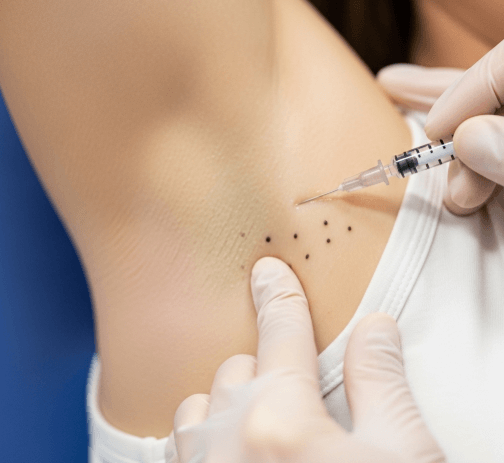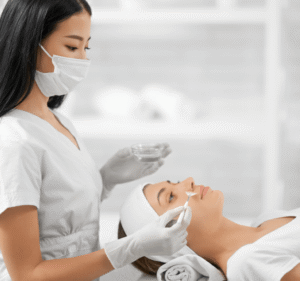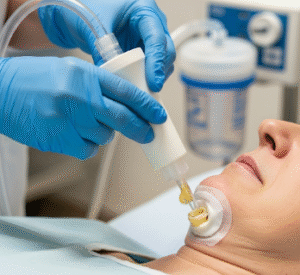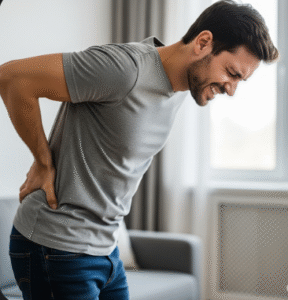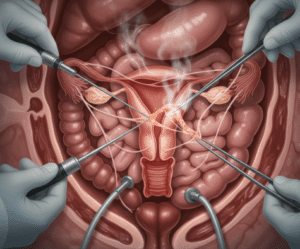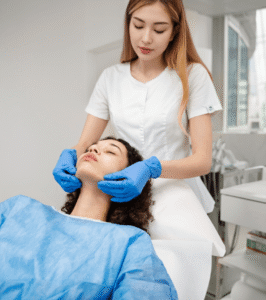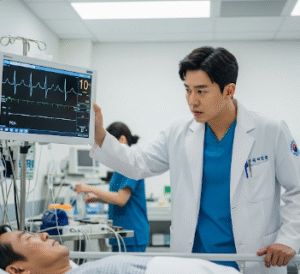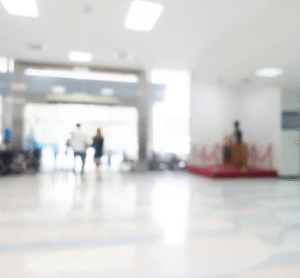What it is
Hyperhidrosis is a medical condition characterized by excessive sweating beyond what the body needs for normal temperature regulation. Unlike typical sweating triggered by heat or exercise, hyperhidrosis often occurs unpredictably and can affect quality of life.
Types include:
- Primary hyperhidrosis → Localized excessive sweating, often in the hands, feet, underarms, or face. Caused by overactive sweat glands without an underlying medical issue.
- Secondary hyperhidrosis → Generalized sweating caused by medical conditions (thyroid issues, diabetes, infections) or certain medications.
In Korea, hyperhidrosis is widely treated both as a medical disorder and as an aesthetic issue, since visible sweating can impact social interactions, confidence, and daily comfort.
Why it’s done
Treatment of hyperhidrosis is pursued to control sweating, improve comfort, and restore confidence.
✔ To reduce embarrassment caused by visible sweat stains or hand moisture
✔ To improve grip strength for daily tasks (important in hand hyperhidrosis)
✔ To prevent skin irritation, fungal infections, and odor from excess sweat
✔ To improve mental well-being, as hyperhidrosis often leads to anxiety or social withdrawal
✔ To enhance professional and social life, especially in Korea’s beauty- and appearance-conscious culture
💡 In Korea, many patients pursue hyperhidrosis treatment early because smooth skin, fresh appearance, and social confidence are highly valued.
Alternatives
There are several alternatives to professional hyperhidrosis treatment:
➡️ Antiperspirants – Prescription-strength products with aluminum chloride.
➡️ Oral medications – Anticholinergic drugs that reduce sweat gland activity.
➡️ Lifestyle modifications – Wearing breathable fabrics, stress reduction, and frequent washing.
➡️ Natural remedies – Herbal soaks, sage tea, and acupuncture (commonly integrated in Korea).
➡️ At-home devices – Iontophoresis kits that deliver mild electrical currents to block sweat temporarily.
In Korea, alternatives often blend modern medicine with traditional herbal remedies, providing holistic support.
Preparation
Before beginning hyperhidrosis treatment in Korea, preparation typically involves:
- 🔹 Medical consultation → Identifying whether the sweating is primary or secondary.
- 🔹 Sweat mapping test → Using iodine-starch tests to pinpoint overactive sweat glands.
- 🔹 Medical history review → Checking for thyroid issues, diabetes, or medications.
- 🔹 Treatment planning → Choosing between injections, devices, or surgery based on severity.
- 🔹 Patient lifestyle review → Adjusting diet, stress factors, and daily routines.
How it’s Done
Hyperhidrosis treatment in Korea is highly customized, with a range of advanced options:
- Topical Treatments
- Prescription creams and wipes with antiperspirant agents.
- Herbal or medicated toners for mild cases.
- Botox (Botulinum Toxin) Injections
- A leading option in Korea for underarms, palms, and soles.
- Botox blocks nerve signals that trigger sweat glands.
- Results last 4–6 months.
- Iontophoresis Therapy
- Low electrical current applied to hands or feet in water trays.
- Temporarily blocks sweat gland activity.
- Laser or Microwave Therapy
- MiraDry (microwave energy) or laser ablation destroys sweat glands permanently in the underarms.
- Popular in Korea for long-lasting results.
- Surgical Options (severe cases)
- Endoscopic thoracic sympathectomy (ETS) → cutting nerves responsible for excessive sweating.
- Considered a last resort due to risk of compensatory sweating elsewhere.
- Combination Therapy
- Korean clinics often combine Botox + iontophoresis + skincare programs for a more comprehensive effect.
Recovery
Recovery depends on the treatment chosen:
➡️ Topical and oral treatments – No downtime, results vary.
➡️ Botox injections – Mild swelling, bruising, or discomfort for 1–2 days; normal activity resumes immediately.
➡️ Iontophoresis – Minimal side effects, mild skin dryness.
➡️ MiraDry/laser therapy – Redness, swelling, or numbness in treated area for a few days.
➡️ Surgery (ETS) – Hospital stay may be required, with longer recovery time.
💡 Korean clinics enhance recovery with soothing cooling therapies, herbal packs, and moisturizing treatments, making the process more comfortable.
Complications
While generally safe, hyperhidrosis treatments can have potential side effects:
⚠ Risks include:
- Temporary weakness in hand muscles (after Botox in palms)
- Dryness or irritation from topical medications
- Compensatory sweating in other areas (after ETS surgery)
- Redness, bruising, or mild pain at injection sites
- Rare nerve damage with invasive procedures
Korean specialists minimize risks by tailoring treatment to each patient’s sweat pattern and preferring non-surgical methods first.
Treatment Options in Korea
Korea is a world leader in minimally invasive dermatology, offering a wide range of advanced hyperhidrosis treatments.
🇰🇷 Popular Korean Options:
- Botox for underarms, palms, soles, and face – quick, effective, popular among office workers and entertainers.
- MiraDry microwave therapy – Permanent sweat gland destruction in the underarms.
- Iontophoresis programs – Widely used for students and professionals with palm/foot hyperhidrosis.
- Laser ablation therapies – Advanced clinics offer precision treatments for sweat glands.
- Holistic programs – Combination of Western medicine and traditional Korean herbal remedies.
✅ Final Thoughts
Hyperhidrosis treatment in Korea offers patients a wide spectrum of advanced, effective, and minimally invasive solutions. From quick Botox injections to long-term microwave therapies, Korea blends medical innovation with patient comfort.
By combining cutting-edge devices with holistic scalp and skin care principles, Korean dermatology provides one of the most comprehensive systems worldwide for controlling excessive sweating, improving confidence, and restoring quality of life.

